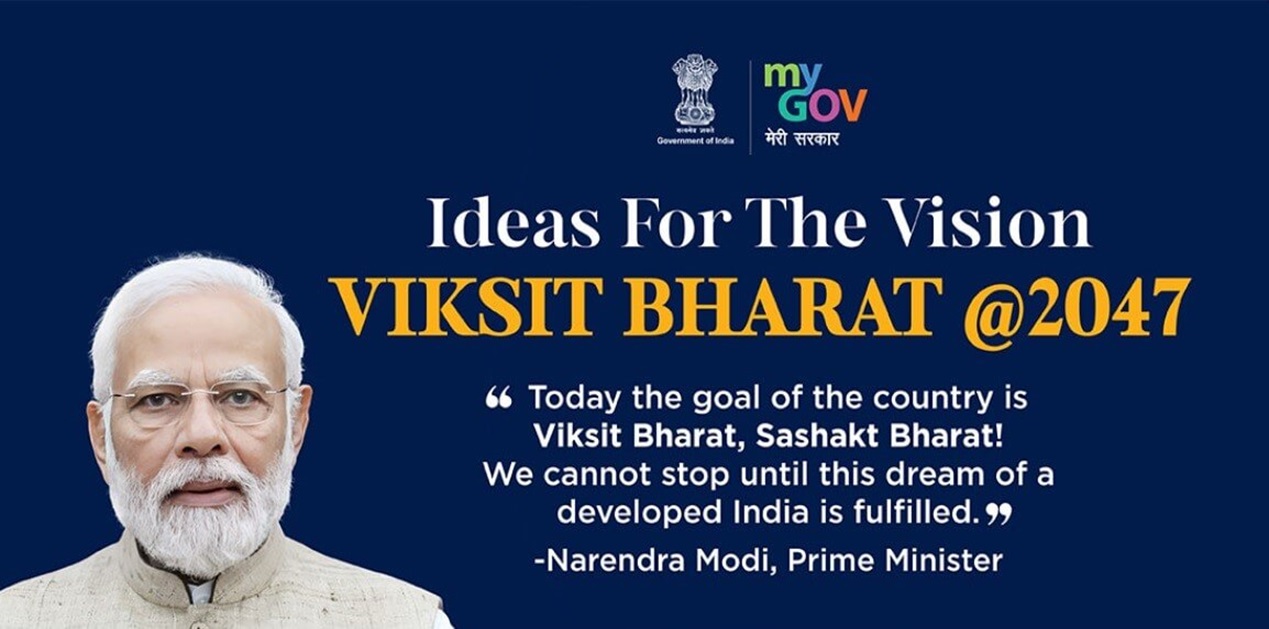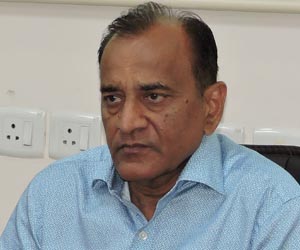Ever since Prime Minister Narendra Modi gave a call for ‘Viksit Bharat’, or a developed India, by the year 2047, there has been a great deal of buzz over the catchphrase. So, what are the requirements that a country must meet to be called ‘developed’? Who determines those parameters? Who does the classification? And, is India on the course to becoming a developed country?
The United Nations Statistics Division (UNSD) says that there is no established convention for designations such as ‘developed’ or ‘developing’ or ‘under-developed’ in the UN ecosystem. The UNSD works under the United Nations Department of Economic and Social Affairs (a central mechanism that provides statistical material on a global level) and is overseen by the United Nations Statistical Commission. The Division points out that the categorisation has been done for the convenience of data dissemination. Two major international money lenders, the International Monetary Fund and the World Bank, have their own definitions of what a developed country means.
But essentially, everybody agrees that the index to judge a country’s status must have a judicious mix of economic development and human development levels.
An important economic indicator is a country’s per capita income (PCI), which is the average annual income of an individual after taking into account the gross domestic product and the total population of the country. Experts give different PCI figures, ranging from $12,000 to $25,000. This is not easy to achieve, especially for a country with a high population, such as India. But there have been improvements in recent years. As per the provisional estimates published on 31 May, 2023, India’s per capita net national income at constant (2011-12) prices increased from Rs 72,805 in 2014-15 to Rs 98,374 in 2022-23; it’s more than a 35 per cent rise. In dollar terms, it is around $2,400.
The main factor propelling GDP growth (the key to a higher PCI) is external trade, which is expected to nearly double from $1.2 trillion in 2023 to $2.1 trillion by 2030—assuming that the annual nominal GDP growth is 10 per cent in the coming years. The other important contributor will be household consumption, which is projected to touch $3.4 trillion by 2030. It would be a big jump from the 2023 figure of $2.1 trillion, which was roughly 57 per cent of the GDP at that time.
While keeping a check on population growth can help to achieve a higher per capita income, the more immediate requirement is to equip the working-age sections with the necessary skill-sets. The ‘Skill India’ initiative, with the launch of the National Skill Development Mission, the Pradhan Mantri Kaushal Vikas Yojana and the Skill Loan Scheme, is designed to address the skilling issue.
Taken together, these factors can dramatically alter the PCI scenario in the India over the next twenty years.
That said, there is widespread consensus that a country must also have a high human development index (HDI) to qualify for being developed. The United Nations uses three main parameters to rank nations on HDI: literacy rate, healthcare and an overall education infrastructure. It was in 1990 that the HDI was first launched, and since then it has been released annually (with a few exceptions).
The HDI value of a nation is arrived at by aggregating the score on indicators such as gender parity, sex ratio, life expectancy, literacy rate, access to electricity etc. by the rural population, multi-dimensional poverty index, and a few others; the value ranges between zero (lowest) and one (highest). A nation with an HDI of 0.8 is usually considered highly developed, while countries below 0.55 are low on human development. India has an HDI of 0.633, which is some distance away from getting it into the ‘developed’ category. But efforts are underway to improve the figure.
Let’s consider some of these indicators in the Indian context. The first is gender parity. India’s past record in women participation in the employment sector has not been good, but that has been changing in recent years. take the following statistics: The female labour participation rate (FLPR) was just 23 per cent in 2017, but according to the Periodic Labour Force Survey (PLFS) for 2022-23, it went up to 37 per cent. Younger and more educated women are entering the workforce. The State of Working India Report 2023 points out that there has been a decrease in gender disparities in the country, as a consequence of the structural transformations that are taking place.
The PLFS data also shows that female labour participation increased by five percentage points for urban women and 14 percentage points for rural women. The proportion of self-employed women rose to more than 70 per cent in 2022-23 (up from 60 per cent in 2021-22).
India also had a poor sex ratio (females per 1,000 males), skewed in favour of males. But here too, things have been changing for the better. The sex ratio is expected to improve to 952 by 2036; and, that would be a major change from 943 in 2011, according to a report released by Women and Men in India in 2023. This has happened as a result of various measures the government has taken. The Beti Bachao Beti Padhao scheme has been a huge contributor in this change. It is aimed to prevent gender-biased sex selective elimination, ensure the survival and protection of the girl child and her education. As a result of the various steps taken, the ratio has climbed to 940.
Then, there is the gross enrolment ratio (GER) data—also part of the HDI. The GER gives the general participation of students at all school levels. The GER has shown a marked improvement in India over the past few years. While in 2020-21, it was close to 54 per cent for the higher secondary level, in the following year the figure jumped up to nearly 58 per cent.
In 2021-22, the total number of students enrolled in school education from primary to higher secondary was 25.57 crore, higher than the 25.38 crore enrolment in 2020-21. The increase in the number of girl students from primary to the higher secondary levels is especially welcome. In 2021-22, over 12.29 crore girls were enrolled, which was a rise of 8.19 lakh compared to the numbers of 2020-21.
As said earlier, health indicators are a crucial component of the HDI. The government has been continuously working to enhance the facilities at primary and tertiary levels. In financial year 2022, it spent two per cent of its GDP for healthcare; this is expected to go up to close to three per cent by 2025.
In 2020, India’s healthcare sector was worth $280 billion, and the figure has been going up since then, with the Prime Minister’s ‘Health for All’ commitment. In order to make quality healthcare accessible and affordable to a larger section of the population, especially to the most vulnerable, the Ayushman Bharat scheme was launched. The flagship initiative gives health insurance coverage aims to cover more than 100 million families by offering them health an insurance cover of five lakhs per family per year. The expansion of Health and Wellness Centers addresses primary healthcare through the promotion of preventive health, which can reduce the need for costly treatments later on. To further reduce medical expenses for the needy, Jan Aushadhi Kendras have been opened, which sell a host of medicines (generic drugs) and surgical equipment at half the rates (and even cheaper) than what is available at retail stores. There were around 80 such centers in 2014; the figure is more than 10,000 now.
The government’s launch of the National Health Mission is an important aspect in seeking to improve the country’s health parameters. It focusses on improving healthcare infra, provide essential drugs and diagnostics at affordable prices and enhance human resources capabilities at the grassroots level. As part of the infrastructure revamp, more All India Institute of Medical Sciences (AIIMS) have been set up, nearly 700 new medical colleges have come up, MBBS seats have increased from some 51,000 in 2014 to 105,163 in 2023, and PG seats have risen from a little more than 31,000 in 2014 to around 67,000 in 2023.
We now come to another factor that has been in the news recently: that of multidimensional poverty. A paper produced recently by NITI Aayog, and titled, ‘Multidimensional Poverty in India since 2005-06’, reported that more than 24 crore people in the country were lifted out of multi-dimensional poverty line between 2014 and 2023. This is indeed an achievement. The paper noted that the share of the multidimensional poor in India’s population declined sharply to 11.28 per cent in 2022-23—from 29.17 per cent in 2013-14. (In 2019-21, it stood at 14.96 per cent.) The paper showed that the pace of decline in poverty headcount ratio, using the exponential method, was faster between 2015-16 and 2019-21 (10.66 per cent annual rate of decline) compared with 2005-06 to 2015-16 period (7.69 per cent annual rate of decline).
Two other factors that count in making a country ‘developed’ are the innovative use of technology to better the lives of people and a robust governance system, where freedom and equality to all citizens are assured through democratic institutional mechanisms. India is well placed here. Aadhaar and direct benefit transfers as well as the widespread use of technology at the grassroots level even, in making digital payments, have transformed the lives of millions of people. India has a strong democracy and independent oversight institutions such as the judiciary and the election commission. The Constitution guarantees fundamental rights of equality, liberty and justice to all.
India will have a five-trillion-dollar economy soon, and is poised to be the world’s third largest economy in the next few years. Its HDI has shown a consistent and marked improvement. If we remain on track, Viksit Bharat by 2047 is achievable. It’s not a chimera.
(The paper is the author’s individual scholastic articulation. The author certifies that the article/paper is original in content, unpublished and it has not been submitted for publication/web upload elsewhere, and that the facts and figures quoted are duly referenced, as needed, and are believed to be correct). (The paper does not necessarily represent the organisational stance... More >>
Image Source: https://vitap.ac.in/wp-content/uploads/2023/12/VIKSIT-BHARAT-poster.jpg










Post new comment